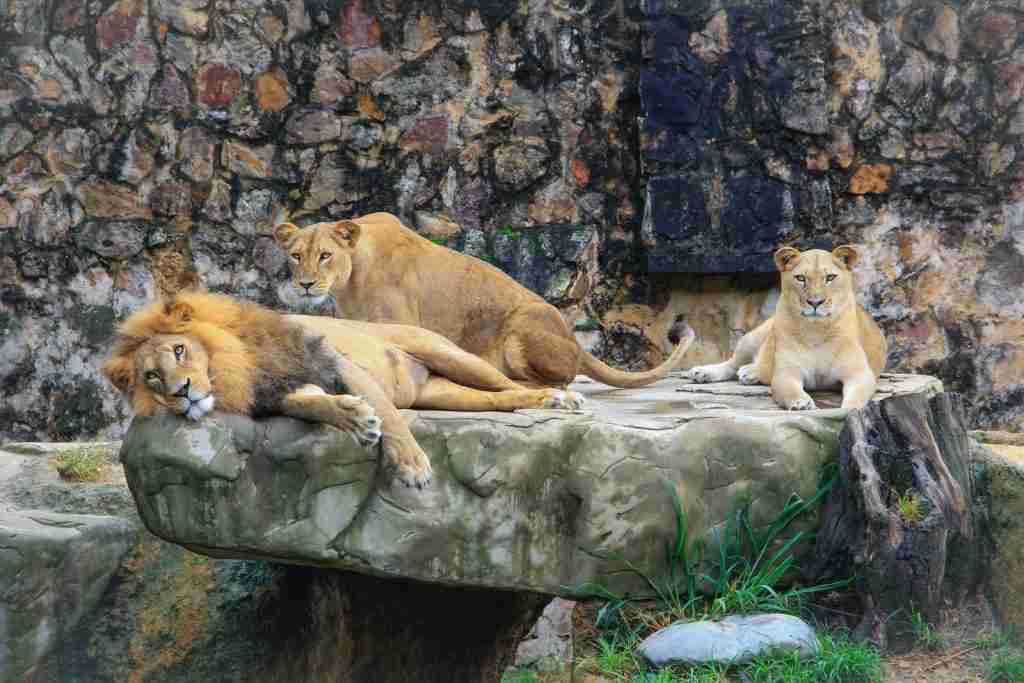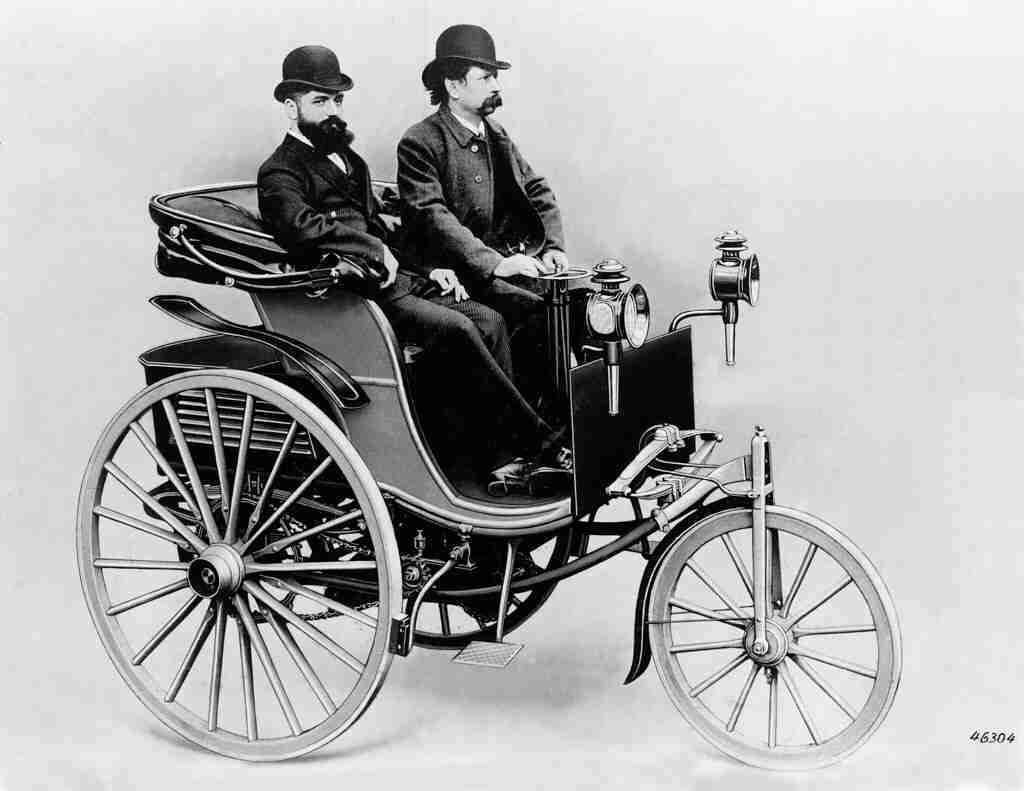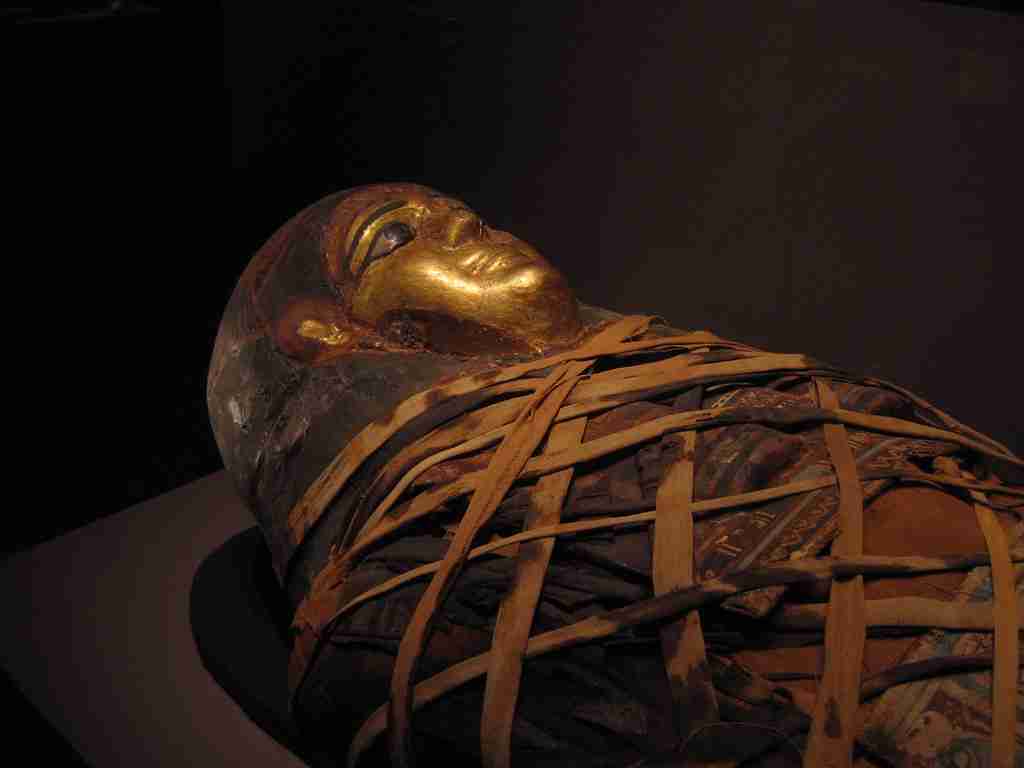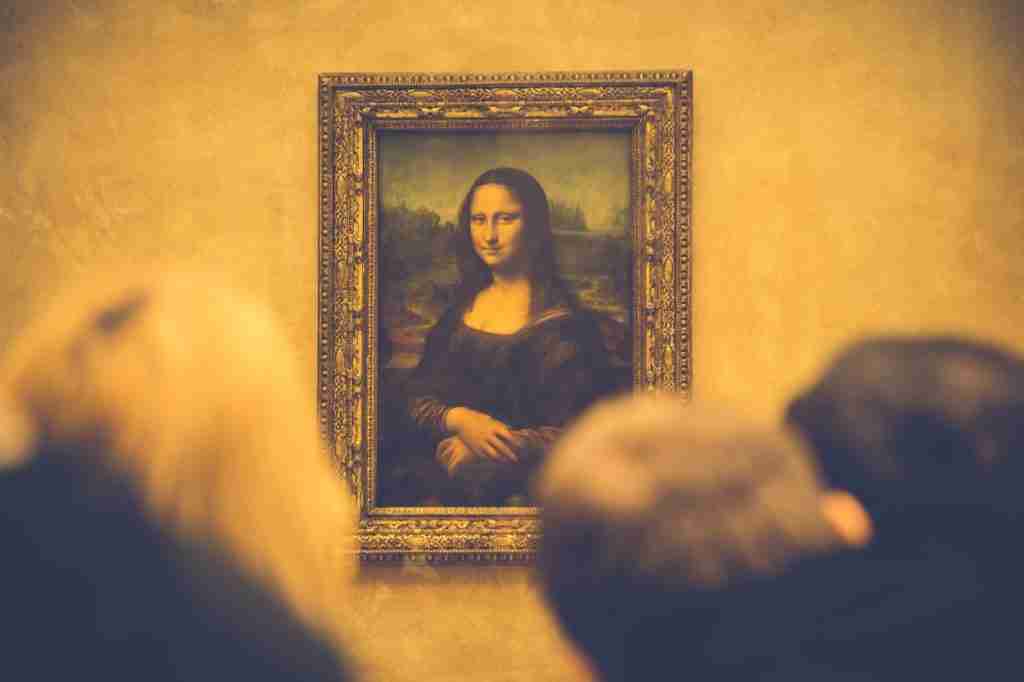100 History Facts | Stories School Left Untold
1. The Great Emu War saw Australia’s military fighting against emus and losing.
Imagine a country’s mighty military going toe-to-toe with… well, large birds. That’s what happened in Australia in 1932. Farmers asked for help controlling emus that were destroying their crops.
The military, confident about handling some birds, took on the challenge. Surprisingly, the emus were swift and hard to target. Despite firing thousands of bullets, the soldiers couldn’t control the birds. So, the emus won, and Australia’s military faced an unexpected defeat.
2. Agloe, New York, started as a fictional town on a map but later became real.
Mapmakers have a quirky trick up their sleeves. They sometimes insert phantom settlements, like trap streets, to protect their work. Agloe in Delaware County, New York, is a fascinating example.
Originally dreamt up as a fictitious entry by map creators, this make-believe Hamlet found its way into reality when someone, taking it for a genuine location, set up the Agloe General Store there.
3. Pope Stephen VI imprisoned his predecessor’s corpse in 897 AD.
Popes are known to make important decisions, but Pope Stephen VI took things to a spooky level in 897 AD. He had the corpse of his predecessor, Pope Formosus, exhumed and put on trial.
That’s right, a real trial with a dead Pope dressed in his Papal garments. Formosus was found guilty (not that he could defend himself), stripped of his titles, and reburied. It’s a macabre chapter in the history of the Papacy and serves as a dramatic example of church politics gone wild.
4. Tsutomu Yamaguchi survived both the Hiroshima and Nagasaki atomic bombings.

Picture being at the wrong place at the worst time, not once, but twice. Tsutomu Yamaguchi faced this when he survived the atomic bombings in Hiroshima while on a work trip, only to return home to Nagasaki and experience the second bombing.
Against all odds, he lived to tell the tale, becoming a symbol of resilience and a stark reminder of the bombings’ horrifying impact.
5. In 2012, thieves in Canada stole around 3,000 tons of maple syrup.
Back in 2012, something pretty wild happened in Canada. A gang of thieves swiped a jaw-dropping 3,000 tons of maple syrup worth $18.7 million $. You read that right: maple syrup is the sweet stuff that makes pancakes even more awesome.
Now, just imagine the size of that pancake party. This sticky caper went down in Quebec, where maple syrup is like gold. It’s like they pulled off a heist in a pancake paradise.
6. Danish astronomer Ole Rømer was the first to measure the speed of light.
In 1676, the Danish astronomer Ole Rømer made pioneering efforts to calculate the speed of light. He meticulously observed the eclipses of Jupiter’s moon, Io, concluding that light took approximately 22 minutes to cover a distance equivalent to the diameter of Earth’s orbit.
Using this methodology and the data available, Rømer’s calculation suggested a speed of light at 226,663 kilometers per second. Although groundbreaking, this estimation was about 24.4% below the now-accepted value of 299,792 km/s.
7. Wojtek was a bear who served in the Polish Army during WWII.
In the bizarre tales of WWII, Wojtek stands out. He wasn’t a human but a Syrian brown bear who became a symbol of courage for the Polish Army.
Adopted as a cub, Wojtek soon grew, carrying ammunition for soldiers and boosting morale. When picturing wartime heroes, a bear might not first come to mind, but Wojtek earned his rank and the love of his comrades.
8. Ancient Romans drank honey mead for a month post-wedding.

Ever wondered about the term honeymoon? Ancient Romans might have an answer. After their weddings, couples drank honey mead, a sweet alcoholic brew, for a month (based on the moon’s cycle).
It was believed that this ritual would ensure marital happiness and fertility. So, the next time you toast newlyweds, remember you’re echoing a practice from millennia ago.
9. Nag Panchami is a Hindu festival celebrating snakes.
Nag Panchami, a Hindu festival with historical roots, centers around the veneration of snakes. This ancient celebration has been observed for centuries, tracing back through the annals of time.
Occurring during the monsoon months of August, Nag Panchami honors the significance of snakes in Hindu mythology. Through offerings of milk and prayers, people express respect and seek protection from these creatures.
10. Albert Einstein was offered the presidency of Israel in 1952.
Albert Einstein, famous for his theory of relativity and iconic hair, was once offered a position far from the laboratories and classrooms. In 1952, Israel extended an invitation for him to become its president.
However, Einstein, humbled by the offer, declined. He felt he lacked the people skills necessary for such a position. Imagine a world where a physicist turned into a nation’s leader.
11. The War in Afghanistan, initiated by the U.S. in 2001.
Initiated in 2001, the U.S. ventured into the war in Afghanistan, setting the stage for a truly unparalleled historical episode. As time unfolded, this conflict etched its mark as the lengthiest military engagement in American history.
What began as a response to counter-terrorism evolved into an enduring saga that stretched across years, leaving an indelible mark on the historical record.
12. In 1938, German physicists Otto Hahn and Fritz Strassmann discovered nuclear fission.

In December 1938, the groundbreaking discovery of nuclear fission was made by a collaborative team, including chemists Otto Hahn and Fritz Strassmann, along with physicists Lise Meitner and Otto Robert Frisch.
This process, nuclear fission, involves the splitting of an atomic nucleus into two or more smaller, lighter nuclei. This division can also result in the release of other particles.
13. The shortest war in history was between Britain and Zanzibar in 1896.
Wars often span years, but the clash between Britain and Zanzibar in 1896 holds a peculiar record. This conflict, touted as the shortest war in history, wrapped up in a mere 40 minutes.
Initiated over a succession dispute, the British fleet’s firepower quickly overwhelmed Zanzibar. It’s a stark reminder that not all battles are drawn-out affairs.
14. The first alarm clock could only ring at 4 a.m.
Imagine having an alarm clock, but it only buzzes at one time, 4 a.m. The earliest known alarm clock, crafted by Levi Hutchins in the 1780s, had this peculiar limitation.
Designed for personal use, Hutchins only needed to rise early, so the single alarm time suited him. It makes you appreciate the modern snooze-friendly clocks we have now.
15. Sunglasses were invented in 12th-century China: One of 100 History Facts You Should Know
Today’s sunglasses, flaunted for style and protection, have ancient roots. In 12th-century China, sunglasses started not just for shielding eyes from the sun but also for hiding one’s eyes in a courtroom.
These early shades had lenses made from smoky quartz. So, when you don those trendy shades, you’re participating in a tradition that’s centuries old.
16. Oxford University is older than the Aztec Empire.

While walking the corridors of Oxford University, you’re stepping through 12th-century history. It’s staggering to realize that Oxford’s first students took notes and attended classes way before the Aztec civilization emerged in the 14th century.
It gives a unique perspective on the vast timeline of human knowledge and culture.
17. During Prohibition, the US poisoned alcohol, leading to many deaths.
The 1920s Prohibition era in the US wasn’t just about secret speakeasies and jazz. The government took a drastic step to deter people from drinking: they poisoned industrial alcohol.
Sadly, this move backfired, causing illness and even death for many unsuspecting drinkers. A sobering reminder of how good intentions can lead to tragic outcomes.
18. Sir Edmund Hillary and Tenzing Norgay were the first to summit Everest in 1953.
In 1953, a remarkable feat etched its place in history as Sir Edmund Hillary and Tenzing Norgay accomplished what no one had before conquering the summit of Everest.
These two brave souls became the trailblazers of mountaineering by standing atop the world’s highest peak.
The yearning to achieve this incredible milestone fueled their determination and unity, forever memorializing their names in the annals of human achievement.
19. Ancient Egyptians used dead mice to ease toothaches.
Toothache? The Ancient Egyptians had an unusual remedy. They believed placing a dead mouse in one’s mouth could help soothe dental pains.
While it might sound bizarre now, it’s a testament to the diverse ways ancient cultures tried to understand and combat ailments. But perhaps stick to modern dentistry for your next toothache.
20. The shortest-reigning monarch was Louis XIX of France.
In July 1830, while some might have been sipping on their mid-morning beverages, Louis XIX of France experienced his entire reign.
Lasting a mere 20 minutes, he claimed the title of the shortest-reigning monarch in history. He abdicated almost instantly after ascending, leaving behind a legacy as brief as a summer shower.
21. ARPANET, the precursor to the internet, was developed in the 1960s.
During the swinging 1960s, a game-changing innovation was quietly taking shape: ARPANET, the precursor to the internet. Picture these brilliant minds coming together to weave a network revolutionizing how we live, work, and connect.
In those days of bell-bottoms and psychedelia, ARPANET laid the foundation for the global web we rely on today.
22. In 1830, ketchup was sold as medicine.
Picture this: visiting a 19th-century apothecary and being handed a bottle of… ketchup. In 1830, ketchup wasn’t just a condiment; it was marketed as a medicinal tonic.
Though it’s hard to imagine ketchup curing anything other than bland fries, it shows the ever-evolving understanding of health and medicine.
23. Pharaoh Pepi II of Egypt had honey-coated slaves to attract flies away from him.
Dealing with pesky flies in the heat is a nuisance. However, Pharaoh Pepi II of Ancient Egypt devised a unique solution.
He had slaves coated in honey to attract the flies, keeping them away from himself. It’s a bizarre yet inventive method, showing that even pharaohs had to find ways to stay comfortable.
24. The first recorded baseball game was played in England in 1749.

Before it became America’s pastime, baseball had roots across the pond. The first recorded game occurred in England in 1749, well before Babe Ruth hit his home runs.
25. The U.S. Army included peanut butter in soldiers’ rations during World War II.
During World War II, peanut butter became a staple for U.S. soldiers. Why? It was packed with protein, easy to carry, and had a longer shelf life. Imagine a soldier on the frontline, taking a quick break to eat a peanut butter sandwich.
It not only gave them energy but also reminded them of home. Soldiers consumed so much peanut butter that they helped popularize it back in the States after the war.
26. Sir Isaac Newton formulated the universal law of gravitation.
Sir Isaac Newton, one of history’s most influential scientists, formulated the universal law of gravitation in 1687.
This groundbreaking law posits that every mass attracts every other mass in the universe, with a force proportional to the product of their masses and inversely proportional to the square of the distance between their centers.
27. The original Cinderella was Egyptian and wore fur slippers.
Before the shimmering glass slippers of popular tales, Cinderella had a more rustic choice of footwear.
The original story from Egypt portrayed her donning fur slippers. It’s a cozy and unique twist on a tale that’s been told and retold for centuries.
28. The zipper’s original name was the clasp locker.

Before we zipped up jackets or fastened our jeans, we might have been clasping them instead. The now-ubiquitous zipper was originally christened the clasp locker when it was first introduced.
It’s a name that speaks to its practical origins. Over time, this innovative fastener transitioned from being a mere locker to the speedy zipper we know and love today.
29. Norway introduced salmon sushi to the Japanese in the 80s.
Sushi and Japan seem inseparable, but here’s a fun twist: salmon sushi, a staple in many sushi menus, was popularized by Norway in the 1980s.
Norway had a surplus of salmon and saw an opportunity in the Japanese market. The introduction was a hit; It’s a delicious reminder of how culinary exchange can shape national dishes.
30. In 1923, a jockey named Frank Hayes won a race despite being dead.
The year 1923 witnessed an extraordinary event on the race track. Jockey Frank Hayes managed to clinch victory in a race, but with a shocking twist, he was dead, having suffered a heart attack mid-race.
His dedication and the momentum of his steed led them past the finish line, marking a triumphant and tragic win.
31. Copernicus proposed the sun being the center of the solar system in the 16th century.
Nicolaus Copernicus, a Renaissance-era mathematician and astronomer, challenged the long-standing geocentric view that Earth was at the center of the universe. In the early 16th century, he introduced the heliocentric model, placing the sun at the center of our solar system.
This revolutionary idea was detailed in his book De revolutionibus orbium coelestium (On the Revolutions of the Celestial Spheres).
32. In the 18th century, entry to the London Zoo cost a dog or cat for lion food.

Visiting the London Zoo in the 18th century had a catch. While we now pay with money, back then, an alternative admission form was available: bringing a dog or cat.
Shockingly, these pets weren’t there to be admired but served as meals for the resident lions.
33. J.P. Morgan once offered $100,000 to anyone who could figure out why his face was so red.
The famed financier J.P. Morgan, with all his wealth, was once perplexed by a personal matter: his unusually red face, so much so that he put forth an offer of $100,000 to anyone who could decipher the cause.
It’s a quirky piece of history, highlighting that even magnates have their own insecurities and mysteries.
34. Sir Thomas Browne first coined the word electricity in 1646.
Sir Thomas Browne had a knack for words, and in 1646, he introduced us to one that would change the world’s electricity.
Derived from the Greek word for amber, it initially referred to the static produced by rubbing amber. Browne’s term now powers our homes, gadgets, and much of modern life.
35. Christianity originated in the 1st century AD.
Travel back to the exciting 1st century AD, when something big was happening: the start of Christianity. people were learning about Jesus Christ’s teachings, which became the beginning of a major belief.
It’s like a spark that ignited a fire, spreading across time and leaving a lasting impact. Imagine being there as this amazing journey began, shaping how people think and believe even today.
36. Ancient Persians trained cats to enter enemy lines and deliver bombs.
The ingenuity of ancient warfare sometimes took wild turns. Ancient Persians, known for their innovative strategies, once trained cats to carry small bombs across enemy lines.
While we adore cats for their playful antics today, back then, they played a rather explosive role on the battlefield.
37. The world’s oldest instruments, over 40,000 years old, are flutes.
Strike up the time machine and get ready to groove. The coolest thing in town over 43,000 to 35,000 years ago was the world’s first-ever flutes. These flutes, made from bones and ivory, are like the OG music makers, bringing rhythm to a whole new era.
It’s like tuning in to a prehistoric radio station, where the melodies of our ancestors still play on. These iconic instruments have been discovered in the Swabian Alps region of Germany, offering a tantalizing glimpse into the early chapters of human history.
38. The original London Bridge is now in Arizona.
The London Bridge, with its storied past, found an unexpected home in the 20th century, Arizona, USA.
Purchased by an American entrepreneur and meticulously reassembled, this iconic bridge now spans the River Thames in memory and the sands of the Arizona desert.
39. Researchers discovered 61 tattoos on the 5,300-year-old mummy.
Considering getting that tattoo? Well, hold onto your ink, because here’s a mind-blowing twist. Researchers stumbled upon a whopping 61 tattoos on a 5,300-year-old mummy.
Talk about setting the trend way, way back. This ancient human wasn’t just rocking the ink. They practically wrote the book.
From lines to shapes, these tattoos are like a window into their world, telling a story that spans millennia.
40. The first car was invented by Karl Benz in 1886.

Rev up your engines for a journey through historical facts. Back in 1886, Karl Benz hit the brakes on ordinary and zoomed into the record books as the inventor of the first-ever car. Yup, you heard that right; he gave life to the automobile revolution.
Just imagine the awe and wonder as his creation roared to life, paving the way for the world of transportation we know today. It’s like he had a crystal ball, glimpsing into a future where cars would become integral to our lives.
41. The first kidney transplant was performed in 1954.
1954 saw a monumental breakthrough as Joseph Murray achieved the first successful long-term kidney transplant. The incredible twist? This transplant involved identical twins, showcasing medical prowess.
Miraculously, the transplanted kidney thrived for 8 years. Murray’s groundbreaking work earned him the Nobel Prize in Medicine in 1990, a well-deserved honor that crowned his pioneering efforts in transplantation.
42. Portland, Oregon, was named after a coin toss.
Can you imagine calling Portland, Oregon, or Boston? Well, it nearly happened. The city’s name was chosen based on the outcome of a coin toss.
Had the coin landed differently, Portland’s bustling streets, quirky donuts, and hipster vibes would be associated with the name Boston. Fate, it seems, has a sense of humor.
43. Coffee was initially chewed. East African tribes mixed coffee berries with fat.
Before coffee became the beloved brew we know today, it had a more solid start. East African tribes once chewed on the combination of coffee berries and fat.
This energizing mix was a precursor to our modern caffeine rituals. Who knew our morning cup had such a chewy history.
44. Mummies in Ancient Egypt had their own passports for transportation.

Ancient Egyptians took the journey to the afterlife seriously. Mummies were equipped with their own passports.
These documents ensured they were transported with respect and recognized in their posthumous travels. Even in death, it seems, paperwork was essential. Safe travels to the realm beyond.
45. Karl Marx was once a New York Daily Tribune correspondent.
Before becoming the father of modern communism, Karl Marx dipped his toes in journalism. He penned articles for the New York Daily Tribune, reporting on European affairs.
It’s fascinating to think of Marx, known for his heavy treatises, meeting newspaper deadlines, and crafting news pieces. Quite a different side to the revolutionary thinker.
46. The word “mafia” never appears in the film version of The Godfather.
The Godfather is a cinematic masterpiece, but here’s a curious detail: the word mafia never graces the film’s dialogues.
Despite being a movie about organized crime and mob families, this deliberate omission added a layer of subtlety.
While the word is absent, the power dynamics and intrigue synonymous with the mafia resonate in every frame.
47. Queen Elizabeth II served as a mechanic and truck driver during World War II.
When most think of Queen Elizabeth II, they imagine a royal figurehead adorned in crowns and robes. Yet, at 18, Princess Elizabeth unexpectedly showcased her determination and sense of duty. In 1944, as World War II raged on, she stepped up and joined the Army.
There, she didn’t opt for a ceremonial role. Instead, she trained as a truck driver and mechanic, getting her hands dirty and serving her nation.
To this day, she holds the unique distinction of being the only female member of the royal family with such hands-on military service.
48. Charlie Chaplin once entered a Charlie Chaplin look-alike contest and came in 20th.

With his iconic mustache and comedic flair, Charlie Chaplin is instantly recognizable. But in an ironic twist, he entered a Charlie Chaplin look-alike contest and only managed to secure the 20th spot.
One might argue the real Chaplin was too authentic for his own contest. It’s a humorous and humbling moment, even for a legend.
49. In Ancient Rome, urine was used to bleach teeth and clothes.
It’s hard to imagine today, but Ancient Romans saw value in urine in ways we’d find quite astonishing.
Not only was it used as a mouthwash to bleach teeth, but it also served as a cleaning agent for clothes. The ammonia content in urine acted as a natural cleaner.
50. The first-ever webcam was used at Cambridge University to monitor a coffee pot.
Think webcams are all about virtual meetings or keeping an eye on pets? Their origin is a bit more mundane yet endearing.
At Cambridge University, the first-ever webcam was set up for a simple purpose: to monitor a coffee pot. Fired of making fruitless trips for a caffeine fix, researchers devised this solution.
51. In 13th-century Europe, holding a red-hot iron could prove innocence.
The 13th-century European judicial system had some methods we’d find horrifying today. One such method was the trial by ordeal, where the accused would grasp a red-hot iron to prove innocence.
The belief was divine intervention would prevent burns if the person were truthful.
52. The Leaning Tower of Pisa took 200 years to complete.

The Leaning Tower of Pisa is more than just an architectural marvel with an iconic slant. It took a whopping 200 years to complete.
Interestingly, only five years into the construction, as the second floor was taking shape, the tower began its infamous tilt.
53. In the 16th century, Turkish women could divorce if their husbands didn’t provide coffee.
Back in the 16th century, coffee was more than just a morning pick-me-up for Turkish women. It held significant cultural importance.
So much so that if a husband failed to provide his wife with her daily dose, she had the legal right to file for divorce.
54. Why was Genghis Khan buried in an unmarked grave?
The mighty Genghis Khan, who carved out the largest contiguous empire in history, chose to be buried in mystery.
While the exact reasons aren’t completely clear, it is believed he wanted to rest undisturbed and keep his enemies from desecrating his grave. Thus, he was buried in an unmarked grave.
Despite numerous attempts, the final resting place of this Mongol leader remains one of history’s great enigmas.
55. Who is the inventor of email?
A young innovator named Ray Tomlinson is credited with inventing email in 1971. Working on ARPANET, the precursor to the modern internet, Tomlinson developed the @ symbol to route messages.
It’s hard to imagine our daily routines without checking our inboxes. Thanks to Tomlinson, digital communication was forever transformed, making our world smaller and more connected.
56. Ancient Egyptian women used crocodile dung as a contraceptive.
The resourcefulness of ancient civilizations never ceases to amaze. In Ancient Egypt, women sought unique methods for birth control. One such method was the use of crocodile dung.
They believed its properties acted as a barrier and spermicide. While it’s certainly not a method we’d endorse today, it’s a window into the lengths societies went to understand and control reproduction.
57. Harvard University was founded before the invention of calculus.
Harvard University, renowned globally, has roots that stretch deep into history. Established in 1636, this prestigious institution existed before Sir Isaac Newton and Gottfried Wilhelm Leibniz developed calculus in the late 17th century.
58. Cheese was accidentally discovered in Mesopotamia 8,000 years ago.
Around 8,000 years ago in Mesopotamia, someone made an unexpected discovery: cheese! Legend believes that milk stored in pouches made from animal stomachs became a tasty treat due to the enzymes present.
As they say, sometimes accidents lead to the best outcomes. This ‘mistake’ led to various cheeses that we enjoy today.
59. Gary Kremen, Match.com’s founder, lost his girlfriend to someone she met on the site.
The digital world is rife with ironies, and here’s one for the books. Gary Kremen, the visionary who founded Match.com, a pioneer in online dating, had a personal tryst with his creation.
His girlfriend, finding love’s allure on the platform, left him for a man she connected with on Match.com. Life truly has its unexpected twists.
60. Roman soldiers were paid in salt.

Think of the times you’ve used the term worth one’s salt. This saying refers to ancient Rome, where soldiers were sometimes paid in salt, a valuable commodity.
This method of payment is the origin of the word salary. Imagine a world where your hard day’s work was compensated with a bag of salt. It underscores the evolving perceptions of value across ages.
61. The first oranges were not orange; they were green.
When you think of an orange, you likely picture its vibrant orange hue. But the earliest oranges, originating in Southeast Asia, were green.
The orange color we’re familiar with today results from the absence of chlorophyll, which happens in areas with cooler winters.
62. In 1325, Modena stole a bucket from Bologna, leading to Italy’s War of the Bucket.
It’s amazing the lengths rivalries can push us to; in 1325, what began as a simple act of mischief, the theft of a bucket by Modena from Bologna, spiraled into full-blown military conflict, now remembered as the War of the Bucket.
Wars have been waged for various reasons, but this one underscores how seemingly trivial provocations can have serious consequences when pride is at stake.
63. Sliced bread was briefly banned in the US in 1943.
1943 was a unique year for bread in the US. To conserve resources during the intense times of World War II, the government temporarily banned sliced bread.
The ban lasted only a few months, but it’s a surprising and sometimes unexpected measure nations take during wartime.
64. Canned food was invented 48 years before the can opener.

The beauty of invention often lies in its imperfections. When canned food was introduced as a revolutionary way to preserve food, there was just one catch: the can opener hadn’t been invented yet.
People had to use hammers and chisels for nearly half a century to access their preserved goodies.
65. The melody for the Happy Birthday song was composed in the late 19th century.
The tune we all hum when the cake comes out, the Happy Birthday song, has been with us longer than you might think. Its melody, originally titled Good Morning to All, was composed in the late 19th century by Patty Hill and her sister Mildred.
Today, it’s sung in multiple languages worldwide, marking a timeless celebration of life and age.
66. Toilet paper was invented in China in the late 1300s.
China was ahead in personal hygiene before the rest of the world caught on. By the late 1300s, they had introduced toilet paper, a much-needed innovation of its time.
This early version was a luxury reserved for the emperor and his court. It’s a humbling reminder of the everyday conveniences we often take for granted.
67. Grapes were first domesticated in the Middle East 8,000 years ago.
The next time you enjoy a juicy grape or sip on a glass of wine, remember 8,000 years ago. That’s when, in the Middle East, early farmers decided to take wild grapes under their care.
They nurtured and cultivated them, ensuring each generation was sweeter and juicier than the last. Thanks to their foresight and dedication, we now have the delicious varieties of grapes we love today.
68. Cinnamon is one of the oldest spices in the world.

The world’s smallest prison in London is quite a sight, comprising just one cell. Known as the Clink, this minuscule jail is a quirky piece of the city’s history.
Though it’s no longer in use, its very existence paints an intriguing picture of justice and confinement from yesteryears.
69. Rome has a sovereign state located entirely in its city limits, the Vatican City.
Rome, a city steeped in history, holds a unique distinction. Nestled entirely within its limits is the Vatican City, the world’s smallest sovereign state.
Home to the Pope and a plethora of art and architectural marvels, this enclave offers a rich tapestry of religious and cultural history, surrounded by the bustling streets of Rome.
70. Broccoli originated in Italy in the 6th century BC.
Ever munched on some broccoli and wondered about its roots? Well, this green veggie isn’t as modern as you might think. Way back in the 6th century BC in Italy, the first versions of broccoli started to grow.
Over time, Italian farmers bred and improved it, giving us the nutritious and crunchy vegetable we toss into our salads and stir-fries today.
71. In 1945, Hans Wilsdorf, the founder of Rolex, transferred the ownership of Rolex to the Wilsdorf Foundation.
You might think the Rolex empire rakes in billions, and you’re right. But here’s a twist: In 1945, Hans Wilsdorf, the brain behind those luxurious timepieces, made a surprising move. Instead of keeping Rolex to himself or selling it for a fortune, he transferred the ownership to the Wilsdorf Foundation.
Yep, the world’s most iconic watch brand is under the care of a charitable foundation. All of Rolex’s profits are directed towards charity. Time does tell fascinating stories.
72. When Chess invented?
Chess, a strategic board game many love, has deep historical roots. It’s believed to have originated in northern India during the Gupta Empire, around the 7th century AD.
From kings to commoners, chess has been enjoyed for centuries and is a universal symbol of intellect and strategy.
73. In Ancient Greece, small penises were considered ideal.
Beauty standards have varied wildly throughout history. In Ancient Greece, for example, small penises were seen as the pinnacle of male beauty, representing intelligence and moderation.
Sculptures and art from that era reflect this preference, offering a window into the ever-evolving ideals of attractiveness.
74. The Great Depression began in 1929 and ended in the late 1930s.
Starting in 1929, the world was plunged into an economic downturn known as the Great Depression. For almost a decade, industries collapsed, unemployment soared, and countless people faced poverty.
Though it ended in the late 1930s, its impact reshaped global economies and political landscapes, reminding us of the delicate balance of economic ecosystems.
75. World War II began in 1939 and ended in 1945.
One of the most significant events in modern history, World War II, began in 1939, drawing nations into a global conflict. It ended in 1945, spanning six years, transforming political borders, societies, and economies.
The memories of the war still echo today, emphasizing the importance of peace and diplomacy in international relations.
76. The United Nations was founded in 1945.

In 1945, the ashes of World War II gave rise to a beacon of hope, the United Nations (UN). Founded to foster global peace and cooperation, the UN sought to ensure that the world would never witness such devastation again.
Its establishment marked a pivotal moment, showcasing humanity’s capacity for unity in the aftermath of unparalleled chaos.
77. Who is the first person to walk on the moon?
As an American astronaut, Neil Armstrong etched his place in history by becoming the first human to set foot on the moon.
On Sunday, July 20, 1969, he took that iconic small step for man, one giant leap for mankind, forever capturing the imagination of people worldwide and symbolizing the endless possibilities of human exploration.
78. Before becoming the pope, Pope Pius II wrote a popular erotic book.
Before ascending to the papacy, Pope Pius II had a rather surprising career detour. He penned The Tale of Two Lovers, an erotic book that gained significant popularity in its time.
79. The first iPhone was released in 2007.
2007 marked the year when technology took a transformative leap. Apple released its first iPhone, reshaping communication, entertainment, and how we interact with the digital world.
This innovative device seamlessly blended phones, music players, and computers, prompting a modern renaissance in mobile technology.
80. The world’s oldest known piece of chewing gum is 9,000 years old.

Believe it or not, chewing gum isn’t a modern fad. The world’s oldest known piece of chewing gum dates back a staggering 9,000 years.
This ancient gum, made from birch bark tar, is found in Sweden and serves as a chewy proof of the age-old human habit of enjoying a good chew.
81. A graphic design student, Carolyn Davidson, designed the Nike Swoosh logo in 1971.
Ever lace up your Nikes and glance at that sleek swoosh on the side? You might be surprised to learn a big-shot designer didn’t craft it. Back in 1971, Carolyn Davidson, a mere graphic design student at the time, was the brains behind that iconic curve.
She was paid a modest sum for her efforts, but the swoosh went on to become one of the most recognized logos globally.
82. The first Olympic games were held in ancient Greece in 776 BC.
The roots of the Olympic games are deeply entrenched in ancient Greece. The first recorded games took place in 776 BC, hosted in Olympia.
Athletes from various Greek city-states would gather to compete, fostering unity and sportsmanship. Today, the games continue, connecting nations in a grand spectacle of athleticism.
83. The largest empire in history was the British Empire.
At its zenith, the British Empire was the largest in history, spanning across continents and influencing cultures. It held sway over nearly a quarter of the world’s landmass and population.
From the Americas to Asia and Africa, its legacy is interwoven into the fabric of many nations today, emphasizing the profound impact of empire-building.
84. The world’s oldest known city is Jericho.

Dubbed the world’s oldest known city, Jericho stands as evidence of human civilization’s resilience. Nestled in today’s West Bank, its origins are over 11,000 years.
Layer upon layer of its archeological sites provides a window into countless epochs, giving us a peek into ancient urban life.
85. The first known use of anesthesia was in ancient Egypt.
The ancient Egyptians, always ahead in medical innovations, were among the first to use anesthesia. Documents from that era mention the use of a plant-based concoction that rendered patients unconscious during surgeries.
It’s truly fascinating how our ancestors navigated the world of medicine, laying the foundation for many practices today.
86. The pyramids in Egypt were built over 4,500 years ago.
Egypt’s iconic pyramids, especially those at Giza, were constructed over 4,500 years ago. Serving as royal tombs, they represent a civilization’s dedication, ingenuity, and advanced understanding of architecture.
87. In 3,900 BCE, Sumerians made beer from barley, water, and bread.
Cracking open a cold beer on a hot day? Here’s a toast-worthy tidbit: your refreshing brew has ancient origins. Around 3,900 BCE, long before microbreweries became a trend, the Sumerians in present-day Iraq were mixing barley, water, and bread to create an early version of beer.
They may not have had fancy labels or unique flavor profiles, but they laid the groundwork for our modern-day pints.
88. The Mona Lisa painting was stolen from the Louvre Museum in Paris in 1911.

The world was taken aback when the renowned Mona Lisa painting vanished from the Louvre Museum in Paris in 1911. This led to an extensive search, and the artwork was recovered in 1913. The thief?
An Italian handyman, Vincenzo Peruggia, believed the painting should return to Italy. It’s a tale as famous as Mona Lisa’s enigmatic smile.
89. Cricket originated in England in the 16th century.
Ever watched a cricket match and marveled at its complexity? This bat-and-ball game has deep roots. Originating in England during the 16th century, it began as a simple pastime and evolved into the international sensation we know today.
From village greens in England to massive stadiums in India and Australia, cricket’s journey spans centuries and continents.
90. In 1955, Ray Kroc opened the first franchised McDonald’s in Des Plaines, Illinois.
Before golden arches dotted landscapes worldwide, McDonald’s started humbly in 1940 as a barbecue drive-in by the McDonald brothers in San Bernardino, California. Fast-forward 15 years, and a shake machine salesman named Ray Kroc saw potential.
He joined forces with the brothers and, in 1955, unveiled the brand’s first franchise in Des Plaines, Illinois, marking the beginning of a global fast-food empire.
91. The first known use of the word hello as a greeting was by Thomas Edison in 1877.
We commonly use hello as a standard greeting today. But did you know its widespread usage as a greeting can be traced back to Thomas Edison in 1877? Edison suggested using Hello to answer the telephone he’d recently invented.
Imagine answering the phone differently had his suggestion been something else.
92. The first color photograph was taken in 1861 by James Clerk Maxwell.
Before the vibrant world of color photography we’re familiar with, images were strictly black and white. James Clerk Maxwell, a pioneering scientist, changed that.
In 1861, he showcased the first color photograph of a tartan ribbon. Maxwell’s invention set the stage for the colorful memories captured and cherished today.
93. The first known use of the @ symbol was in 1536.
The “@” symbol’s origin remains enigmatic. Some theorize medieval monks created it by merging the Latin “ad” into a singular character, while others believe it originated from the French “à,” with scribes forming it efficiently.
Another possibility suggests it represented “each at”, with the “a” enclosed by an “e”. Francesco Lapi, a Florentine merchant, provided its first documented use in 1536, using it to represent amphorae, a unit of wine measurement.
94. Golf is believed to have originated in Scotland in the 15th century.
Fancy a round of golf? While you might think of sunny courses in Florida or California, the game’s true origins take us to a slightly chillier locale. Picture the rolling hills and rugged coastlines of Scotland in the 15th century.
That’s where golf, as we know it, began its journey. Scottish folk started hitting balls into holes with sticks, laying the foundation for the modern golf courses and tournaments we adore today.
95. The first successful organ transplant was a kidney transplant in 1954.
In 1954, the realms of medical possibilities expanded dramatically. The first successful organ transplant was performed, with a kidney being transplanted between identical twins.
This landmark event offered hope, heralding a new era where organ transplants have since saved countless lives.
96. The first electric street light was installed in Cleveland, Ohio in 1879.

Before the widespread use of electric street lights, nights in cities were dark, illuminated only by gas lamps or candles.
That changed in 1879 when Cleveland, Ohio, had the honor of installing the first electric street light. This brilliant innovation literally brightened up streets, making nights safer and cities livelier.
97. The first artificial satellite, Sputnik 1, was launched by the Soviet Union.
The space age truly began when the first artificial satellite, Sputnik 1, soared into the skies. Launched by the Soviet Union in 1957, its simple beeping signal sent from orbit stunned the world.
It marked a pivotal moment in the Cold War, sparking the space race and changing how we view our place in the universe.
98. The first successful face transplant was performed in France in 2005.
Transplants reached a groundbreaking milestone in 2005, in France. That’s when the first successful face transplant was performed.
It wasn’t just a leap for surgical techniques, but it gave patients, many of whom had lost their faces due to traumas, a chance at a new life with renewed confidence.
99. The first commercial smartphone, the IBM Simon, was released in 1993.
Before our pockets were graced with modern smartphones, there was the IBM Simon in 1993. Recognized as the first commercial smartphone, it combined a mobile phone with features like an address book, calendar, and native appointment scheduler.
Looking at it now, we’d be amazed at how far we’ve come in just a few decades.
100. The first recorded instance of perfume-making was in Ancient Egypt.
Fragrances have been enchanting us for thousands of years. The first recorded instance of perfume-making hails from Ancient Egypt.
Perfumers in this grand civilization created fragrances for ceremonies, burials, and even everyday wear.
FAQs
1. The earliest known form of writing dates back to around 4000 BC, when the Sumerians in ancient Mesopotamia developed a system of writing called cuneiform.
2. The Great Wall of China, which is the longest wall in the world, was built over a period of more than 2,000 years and stretches for over 13,000 miles.
3. The ancient Greek philosopher Aristotle was the tutor of Alexander the Great, one of the most successful military commanders in history.
4. The Industrial Revolution, which began in England in the late 18th century, marked a significant shift in human history, leading to mass production and technological advancements that changed the world.
5. The Renaissance, which took place in Europe during the 14th to 17th centuries, was a period of significant cultural and artistic growth, marked by advancements in painting, sculpture, literature, and architecture.
1. The shortest war in history lasted only 38 minutes, between the countries of Zanzibar and Great Britain in 1896.
2. Napoleon Bonaparte was once attacked by a horde of rabbits during a hunting trip.
3. Cleopatra, the last pharaoh of ancient Egypt, spoke at least 9 languages fluently.
4. The ancient Mayan civilization used chocolate as currency, and it was considered a luxury item.
5. The Great Pyramids of Giza, built around 4,500 years ago, were the tallest man-made structures in the world until the Eiffel Tower was completed in 1889.
It is difficult to determine the exact oldest historical fact, as much of the information from prehistoric times has been lost or is still being discovered through archaeological excavations. However, some of the earliest known recorded historical events include the Sumerian King List, which documents the names of Sumerian kings and their reigns, dating back to around 2100 BC, and the Egyptian Palermo Stone, which records the names of early pharaohs and significant events from around 3000 BC.
Around 7000 years ago, human civilizations were beginning to develop in various parts of the world. In the Middle East, the Neolithic era was underway, and people were transitioning from hunting and gathering to agriculture and animal domestication. This period saw the emergence of early civilizations such as Sumer, which developed in the region that is now Iraq. In Europe, the Megalithic culture was beginning to develop, characterized by the construction of large stone structures such as Stonehenge in England. In Asia, the ancient civilization of the Indus Valley was thriving, with cities such as Harappa and Mohenjo-daro in what is now Pakistan. Additionally, in the Americas, the Olmec civilization was emerging in what is now Mexico, known for their large stone heads and advanced art and architecture.
10,000 years ago marks the beginning of the Holocene epoch, which is characterized by the end of the last Ice Age and the emergence of human civilization. During this time period, people were transitioning from hunter-gatherer societies to agricultural-based societies in various parts of the world. In the Middle East, early civilizations such as the Natufian culture and the prehistoric site of Göbekli Tepe were beginning to develop. In the Americas, the Clovis culture was thriving, known for their distinctive stone tools and weapons. In Europe, the Mesolithic period was underway, and people were living in semi-permanent settlements and engaging in agriculture, animal husbandry, and fishing. Additionally, various large mammals such as woolly mammoths, saber-toothed tigers, and giant sloths were still roaming the Earth at this time.







